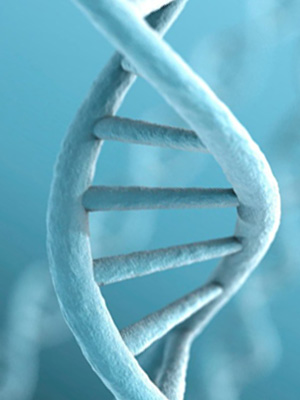
Genes are the units of heredity. They contain the hereditary information encoded in their chemical structure for transmission from generation to generation. They affect development and function, both normal and abnormal. Though genes are not seen with a microscope, much is known about them by indirect methods. It is said we inherit about 50000 genes from father and 50000 from mother.
The study of genes, heredity and variation in living organisms is called as Genetics. Though it comes under biology, it draws similarities to life sciences and is also linked with the study of genes.
Genes whose combined action affects one particular character are known as polygenes or 'multiple genes'. In humans, three genes have been identified as being responsible for muscular dystrophy one is a sex-linked recessive gene, the second is an autosomal recessive and the third is an autosomal dominant gene.
Many instances are known in which the same character is controlled by several genes-the colour of our skin, height and weight, life span, degree of resistance to disease, rate of heart beat, artirial blood pressure and many other inherited traits. These genes may occupy separate positions in the chromosomes, some may be widely distributed on several non-homologous chromosomes.
The modern definition of genes could be stated as "a locatable region of genomic sequence, corresponding to a unit of inheritance, which is associated with regulatory regions, transcribed regions, and or other functional sequence regions." Genes hold the information to build and maintain an organism's cells and pass genetic traits to offspring. A gene can also be called a sequence of nucleic acids (DNA-Deoxyribonucleic acid or in the case of certain viruses RNA-Ribonucleic acid).
Features and characteristics are carried on or inherited from our parents and ancestors. Each cell in a human body consists of about 25,000 to 35,000 genes.
For example, if both the parents of a child have brown hair, the child might inherit the trait of brown hair from them. Animals and plants too comprise of genes apart from humans.
Cells are the basic structural and functional unit of life, our body is is made of billions of such cells. Genes are found on tiny spaghetti-like structure called chromosomes. Chromosomes are thread-like strands that contain hundreds, or even thousands, of genes. And these chromosomes are found inside the cells. A cell is so tiny that we cannot view it through our naked eye, so it could only be seen with the help of a microscope.
In a human cell, the nucleus contains 46 individual chromosomes and 234 pairs of chromosomes. Half of each chromosomes come from one parent and half comes from the other parent.
Genes are usually stable, but sometimes normal genes may be converted into abnormal ones- this change is called mutation. Mutation is a regular phenomenon in nature. The natural mutation rate is increased by exposure to mutagens such as ultraviolet rays, radiation or chemical carcinogens.





